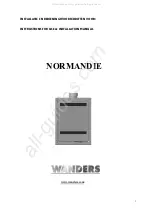
SIGNATURE 5
ecosystoves.co.uk
+ 44 1256 830099
10
AIR CONTROL
The Signature range has one simple easy to use and highly reactive air control. Turning this dial clockwise will decrease the airflow into
the fire and turning this dial anti-
clockwise will increase the air drawn into the fire… it’s that simple
. The Signature range has an inner
and outer shell and all the air being fed into the fire is funneled between these two layers. When the vent is opened, air is drawn up the
rear and firstly fed through the series of holes positioned in the baffle plate (the large piece of metal bolted in at the rear). Air flowing
through here helps to feed air into the chamber and re-burn the initial smoke produced by the fire. This is a unique design and one of
the key reasons why this stove range is extremely clean burning. Air that is not fed through these holes continues to travel between the
two layers and is then dispersed at speed over the glass. This heated and speeding effect is key to keeping the class clean.
When you light the fire, you will want the vent fully open and in most cases the door ajar slightly. However, this will depend on how well
the chimney is drawing. When the fire is established to some degree the door can be closed and the vent gradually closed. If you close
the vent down too early before the fire is established, it could go out and/or increase smoke output. When the stove is burning hot and
is well established you can turn the fire right down. If done at the right time and with the right fuel, it will die right back and gently burn
away for a long time.
When you come to refuel, if there is insufficient burning material in the fire bed to light a new fuel charge, excessive smoke emission can
occur. Refueling must be carried out onto a sufficient quantity of glowing embers and ash that the new fuel charge will ignite in a
reasonable period. If there are too few embers in the fire bed, add suitable kindling to prevent excessive smoke.
FUEL OVERLOADING
The maximum amount of fuel specified in this manual should not be exceeded. Overloading can cause excess smoke.
Caption for this photo
Easy to use reactive air control s photo
TIPS
If you find the glass or fire bricks are going black even when the fire is established, it is most likely caused by burning wet wood.
When burning dry wood, the fire bricks and glass should remain largely clean.






































